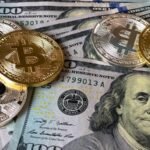“The Wealth of Nations”: What Is It?
Adam Smith, an influential Scottish philosopher and economist, wrote “The Wealth of Nations” in 1776. “An Inquiry into the Nature and Causes of the Wealth of Nations” is its full title. The book was written by Smith to explain how the mercantilist system was being overturned by the industrialized capitalist system.
According to mercantilism, wealth was fixed and finite. The only way to prosper was to accumulate gold and impose tariffs on foreign goods. This theory holds that nations should sell their goods to other nations without receiving any payment in return. Ann Kordas et al. () found that countries resorted to rounds of retaliatory tariffs to stifle international trade. eds.). “ Volume 2 of World History, from 1400: 6.3 The First Industrial Revolution and Capitalism.” 2022 OpenStax.
Smith’s main argument.
The fundamental tenet of Smith’s argument was that self-interest leads to prosperity.
Smith argued that people’s natural self-interest would promote greater prosperity than strict government regulations by allowing everyone to produce and trade goods as they pleased (free trade) and opening markets to domestic and foreign competition.
Smith was of the opinion that people ultimately serve the public interest by making decisions about their daily finances. He wrote in “The Wealth of Nations”:
Adam Smith referred to this free-market force as the “invisible hand” because it needed support to work its magic. In particular, the market that developed as a result of an increasing division of labor throughout society and within production processes resulted in a series of interdependencies. Through personal gain, these relationships promoted social welfare.
To put it another way, if you produce only bread and specialize in baking, you will need to rely on someone else for your beer, meat, and clothing. In the meantime, the clothing specialists must rely on you for food and other necessities. The market that develops when people require goods and services that they are unable to produce themselves is the source of prosperity.3 The Invisible Hand
Smith’s invisible hand, the economy’s automatic pricing and distribution mechanisms, interact directly and indirectly with centralized, top-down planning authorities.
Government policy versus human nature.
The hand that is not visible is not a real, distinct thing. Instead, it is the sum of a lot of natural things that happen when consumers and producers trade. One of the most significant insights in the history of economics was provided by Adam Smith. One of the main justifications for free-market ideologies continues to be this.
According to contemporary interpretations of the invisible hand theorem, private ownership of the means of production and distribution is required, and if trade is free of regulation, society will naturally flourish. The idea and function of government are at odds with these interpretations.41 Government is not accidental. It is deliberate and prescriptive. Coercion is used by regulators, politicians, and those who use legal force (like the courts, police, and military) to achieve specific objectives.
Macroeconomic forces, on the other hand—supply and demand, buying and selling, profit and loss—occur voluntarily until they are inhibited or overridden by government policy. Therefore, it is accurate to conclude that the invisible hand is influenced by government rather than the other way around.
Control of free markets by the government.
Government planning is hampered by the absence of market mechanisms. This is known as the economic calculation problem by some economists.
The price mechanism dynamically captures decisions based on willingness to pay for a good or service made by individuals and businesses. As a result, resources are automatically allocated to the most important goals.
At the point when state run administrations disrupt this interaction, undesirable deficiencies and excesses will generally happen. Take for instance the severe gas shortages that occurred in the United States in the 1970s. In order to raise oil prices, the Organization of Petroleum Exporting Countries (OPEC), which had just been formed at the time, reduced production. Price controls were implemented by the Nixon and Ford administrations as a response to reduce the price of gasoline for American consumers. The objective was to provide low-priced gas to the general public;
however, there was no incentive for gas stations to stay open longer than a few hours. There was no incentive for oil companies to increase domestic production. There was every reason for customers to buy more gas than they needed. Gas lines and widespread shortages followed. After prices were allowed to rise and controls were removed, those gas lines disappeared almost immediately.6 While some may be tempted to assert that the government is limited by the invisible hand, this is not necessarily the case. Instead, the same forces that limit the effectiveness of government intervention are those that direct voluntary economic activity toward significant societal benefits.










